 A concept for seeded all-or-nothing assembly of micron-scale DNA nanostructures that could extend nanofabrication capabilities and enable creation of highly specific diagnostics.
A concept for seeded all-or-nothing assembly of micron-scale DNA nanostructures that could extend nanofabrication capabilities and enable creation of highly specific diagnostics.
Monday, March 22, 2021
Planting the seed for DNA nanoconstructs that grow to the micron scale
 A concept for seeded all-or-nothing assembly of micron-scale DNA nanostructures that could extend nanofabrication capabilities and enable creation of highly specific diagnostics.
A concept for seeded all-or-nothing assembly of micron-scale DNA nanostructures that could extend nanofabrication capabilities and enable creation of highly specific diagnostics.
Researchers develop ultra-sensitive graphene-based flow microsensors
 Researchers have developed the thinnest and most sensitive flow sensor, which could have significant implications for medical research and applications.
Researchers have developed the thinnest and most sensitive flow sensor, which could have significant implications for medical research and applications.
Finding high-Q resonant modes in a dielectric nanocavity
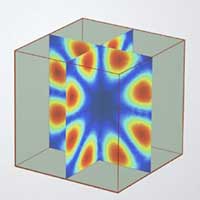 Scientists have developed a reliable way to discover the high-Q modes in a dielectric nanocavity.
Scientists have developed a reliable way to discover the high-Q modes in a dielectric nanocavity.
A sense for the unseen: Novel DNA sensor can rapidly detect antibiotic-resistant pathogens
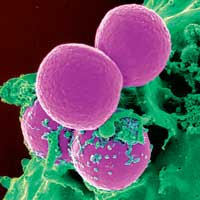 Researchers develop novel culture-free self-driven DNA nanosensor that can rapidly and accurately detect antibiotic resistant pathogens.
Researchers develop novel culture-free self-driven DNA nanosensor that can rapidly and accurately detect antibiotic resistant pathogens.
Modification of graphene using laser light
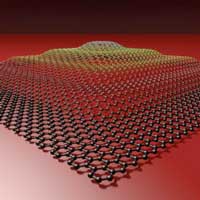 Using a technique called optical forging, researchers were able to create structures that are up to 10 000 times stiffer than unmodified graphene. This is record breaking for a material as thin as this.
Using a technique called optical forging, researchers were able to create structures that are up to 10 000 times stiffer than unmodified graphene. This is record breaking for a material as thin as this.
Luminescent QR security labels based on nanoclusters
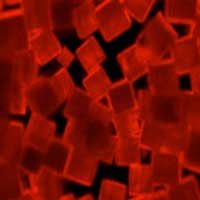 Stable solid-state emitting, atomically precise nanoclusters with high photoluminescence quantum yield are promising materials for developing large-area printable electronics, mainly for security prints, wearable LEDs, and healthcare sensors.
Stable solid-state emitting, atomically precise nanoclusters with high photoluminescence quantum yield are promising materials for developing large-area printable electronics, mainly for security prints, wearable LEDs, and healthcare sensors.
New nanoporous material promising for making renewable energy from water
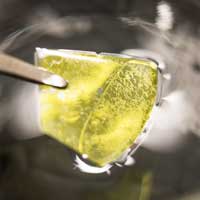 Scientists have developed a material, nanoporous cubic silicon carbide, that exhibits promising properties to capture solar energy and split water for hydrogen gas production.
Scientists have developed a material, nanoporous cubic silicon carbide, that exhibits promising properties to capture solar energy and split water for hydrogen gas production.
Janus nanoreactor designed for bifunction of photocatalytic water oxidation/reduction
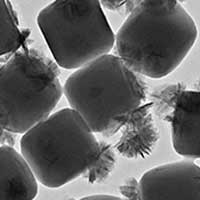 Researchers report a novel and simple strategy for the synthesis of dual-component Janus nanoreactor with asymmetric structure to realize bifunction of photocatalytic water oxidation/reduction.
Researchers report a novel and simple strategy for the synthesis of dual-component Janus nanoreactor with asymmetric structure to realize bifunction of photocatalytic water oxidation/reduction.
A novel nanofiltration membrane for highly-efficient dye/salt separation
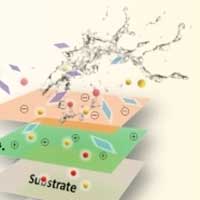 Researchers prepared a nanofiltration membrane with a loose and dually charged separation layer based on a simple catechol-amine chemistry surface engineering strategy.
Researchers prepared a nanofiltration membrane with a loose and dually charged separation layer based on a simple catechol-amine chemistry surface engineering strategy.
A bilayer hydrogel composite actuator with sensing performance
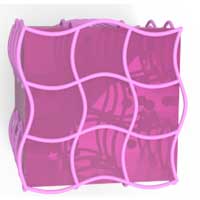 Researchers have developed a novel asymmetric bilayer carbon nanotubes elastomer/hydrogel composite with integrated actuating and sensing performances.
Researchers have developed a novel asymmetric bilayer carbon nanotubes elastomer/hydrogel composite with integrated actuating and sensing performances.
Tunable smart materials
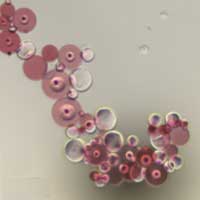 Researchers demonstrate tunable microparticles that can assemble into larger structures based on the content of attached chemical groups, which may lead to the development of smart sensors or self-healing materials.
Researchers demonstrate tunable microparticles that can assemble into larger structures based on the content of attached chemical groups, which may lead to the development of smart sensors or self-healing materials.
Big breakthrough for 'massless' energy storage
 Researchers have produced a structural battery that performs ten times better than all previous versions. It contains carbon fibre that serves simultaneously as an electrode, conductor, and load-bearing material.
Researchers have produced a structural battery that performs ten times better than all previous versions. It contains carbon fibre that serves simultaneously as an electrode, conductor, and load-bearing material.
Subscribe to:
Comments (Atom)
